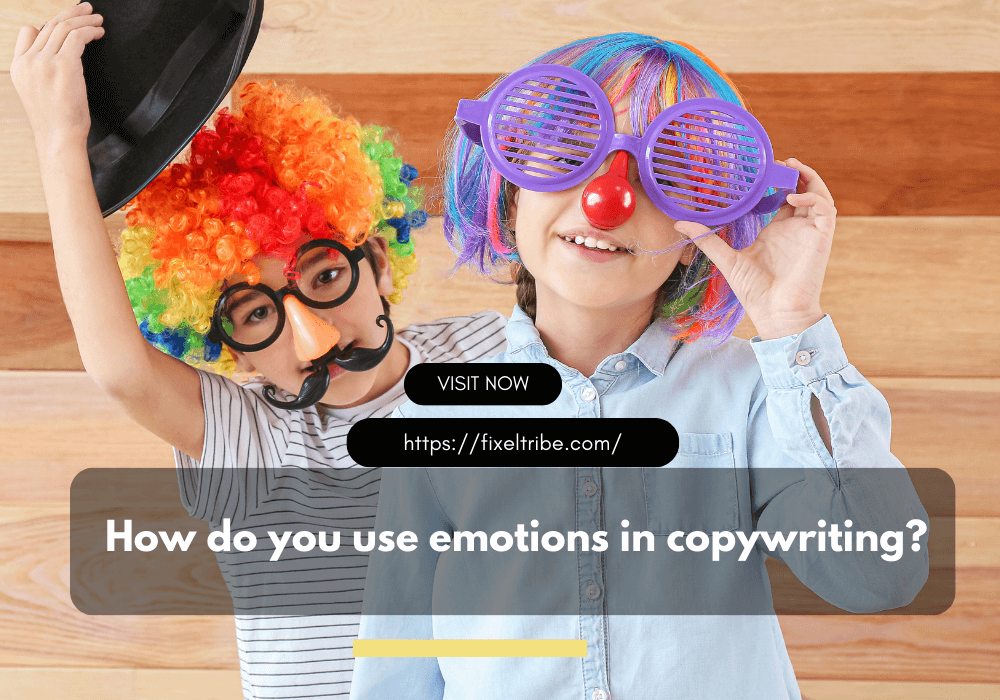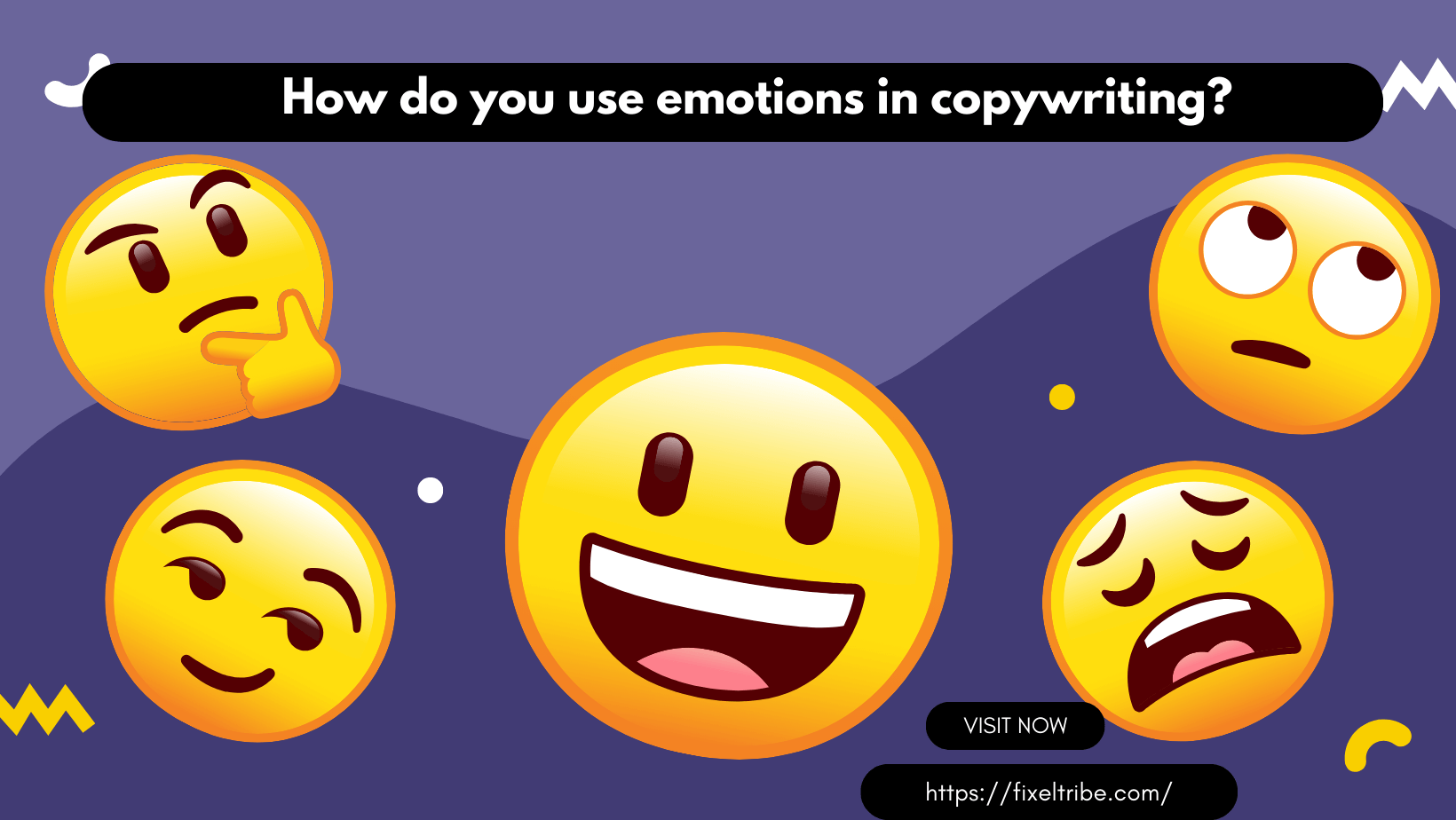The Art of Evoking Emotions in Copywriting
The Power of Emotion in Social Media Copywriting
In the ever-evolving landscape of digital marketing, social media has emerged as a powerful platform for connecting with audiences, fostering brand loyalty, and driving conversions. Yet, within this dynamic sphere, the role of emotions in copywriting cannot be overstated. Emotions are the catalysts that transform ordinary social media content into compelling narratives that resonate deeply with readers, prompting them to take action. In this section, we will delve into the profound impact of emotions in social media copywriting and explore why social media engagement is of paramount importance in the digital age. Ready to learn How do you use emotions in copywriting? Lets dive into the details:
1. Why Is Social Media Engagement Important?
In today’s digitally interconnected world, social media platforms serve as bustling hubs of communication, connection, and commerce. They offer businesses an unparalleled opportunity to establish direct lines of communication with their target audiences. Social media engagement is not just an optional add-on; it is the lifeblood of effective digital marketing. Here’s why it holds such significance:
1. Builds Relationships: Engaging content on social media goes beyond transactional interactions. It fosters a sense of community and trust. When brands engage authentically with their audience, it helps establish a genuine connection, turning casual followers into loyal customers. These relationships are the bedrock of brand loyalty and advocacy.
2. Boosts Visibility: Social media platforms utilize complex algorithms that prioritize content based on its ability to spark interaction. Engaged audiences are more likely to like, share, and comment on content. Consequently, the more engagement your content garners, the more likely it is to be seen by a broader and more diverse audience. This increased visibility can significantly amplify your brand’s reach.
3. Drives Conversions: The ultimate goal of digital marketing is to convert interested parties into customers. Engaged followers take more inclined action. Whether it’s making a purchase, signing up for a newsletter, or sharing your content with their network, active engagement propels your audience down the conversion funnel. This translates into tangible results and measurable returns on your marketing efforts.
In essence, social media engagement is not merely a metric to track; it is a strategic imperative. It transforms passive scrolling into active participation and facilitates meaningful interactions that can translate into real-world outcomes for businesses. Now, let’s dive into how harnessing emotions in copywriting can serve as the linchpin of effective social media engagement.
2. Emotions: The Secret Sauce of Social Media Copywriting
At the core of every memorable social media post, tweet, or caption lies the ability to evoke emotions. Emotions are the building blocks of storytelling, and storytelling is the vehicle through which brands connect with their audience. Whether it’s joy, empathy, inspiration, or curiosity, emotions are the key to crafting content that resonates. In the realm of social media, where attention spans are fleeting and competition is fierce, the ability to elicit an emotional response is a formidable advantage.
The Role of Emotions in Copywriting:
1. Establishing Relevance: Emotions help make your content relatable. They provide a common ground between your brand and your audience. When you tap into emotions that your target demographic shares, you create an immediate connection. For example, if your audience consists of adventure enthusiasts, invoking the excitement of exploration can make your content profoundly relevant.
2. Stirring Action: Emotions are the catalysts that prompt action. A heartwarming story or an inspiring message can move your audience to like, comment, share, or click. When your content elicits an emotional response, it compels users to engage actively with your brand.
3. Fostering Memorability: Emotions make content memorable. When people feel something as a result of interacting with your content, they are more likely to remember it. This not only strengthens brand recall but also enhances the likelihood of repeat engagement.
4. Differentiating Your Brand: In the crowded social media landscape, where similar products and services abound, emotions can set your brand apart. By infusing your content with the right emotions, you can create a unique and distinctive brand identity that resonates with your audience.
3. Emotion Social Media Engagement:

So, how do emotions fuel social media engagement? Consider these scenarios:
• Joy: A humorous or heartwarming post that evokes joy is more likely to be shared, spreading happiness and amplifying your brand’s reach.
• Empathy: Demonstrating empathy in response to customer feedback can strengthen brand loyalty and trust, turning negative experiences into positive ones.
• Inspiration: Sharing inspirational stories or quotes can motivate your audience to take action or pursue personal growth, thereby driving engagement.
• Curiosity: Crafting content that piques curiosity encourages users to click, explore, and delve deeper into your brand’s offerings.
In summary, emotions in copywriting are the lynchpin of effective social media engagement. They breathe life into content, making it relatable, memorable, and impactful. By understanding your audience, selecting the right emotions, and crafting compelling narratives, you can harness the incredible power of emotions to create social media content that not only resonates but also inspires action and fosters lasting connections with your audience. So, the next time you wonder, “How do you use emotions in copywriting?” remember that emotions are not just words; they are the heartbeats of your brand’s story.
Now, let’s explore how emotions can be harnessed to enhance social media engagement.
4. Using Emotions in Copywriting/ How do you use emotions in copywriting?
1. Understand Your Audience:
The foundation of effective emotional copywriting lies in a deep understanding of your audience. To resonate with their hearts and minds, you must first uncover their values, desires, and pain points. Conducting comprehensive audience research is the cornerstone of this process. Here’s how you can harness the power of understanding your audience:
• Values and Beliefs: Identify the core values and beliefs that your target audience holds dear. For instance, if you’re promoting sustainable fashion, your audience likely values environmental consciousness and ethical practices. By aligning your copy with these values, you can evoke emotions of responsibility and pride.
• Desires and Aspirations: Explore what your audience aspires to achieve or experience. Are they seeking adventure, relaxation, success, or personal growth? Tailoring your copy to align with these desires can trigger emotions that prompt action. If you’re in the travel industry, tapping into the desire for excitement and wanderlust can inspire bookings.
• Pain Points and Challenges: Delve into the challenges and pain points that your audience encounters in their lives. What keeps them awake at night? Addressing these pain points with empathy can evoke emotions of relief and understanding. For example, a financial advisor can use empathy to address the stress and uncertainty surrounding personal finances.
2. Choose the Right Emotions
Different emotions yield varying responses from your audience. To achieve your copy’s intended goals, it’s essential to choose the right emotions. Here’s a breakdown of emotions and their potential outcomes:
• Happiness and Excitement: Content that elicits happiness or excitement often leads to shares, likes, and positive comments. It’s the emotional spectrum that fuels virality and builds brand enthusiasm.
• Empathy and Compassion: These emotions can encourage meaningful conversations and foster a sense of community. They’re particularly effective in addressing challenges and sensitive topics. A charity organization, for instance, may use empathy and compassion to inspire donations and support.
• Inspiration and Aspiration: Inspiring content can motivate your audience to take action, whether it’s pursuing personal growth or striving for a better life. It prompts your audience to engage actively with your brand.
• Curiosity and Intrigue: Content that sparks curiosity encourages users to click, explore, and delve deeper into your offerings. It ignites the desire for discovery and can lead to increased engagement.
3. Craft Compelling Stories:
Storytelling is a masterful tool for evoking emotions in your audience. Real-life anecdotes, case studies, and customer testimonials breathe life into your brand and make it relatable. Here’s how to leverage storytelling effectively:
• Humanize Your Brand: Share stories that humanize your brand. Narratives about your journey, your team, or the challenges you’ve overcome can establish a genuine emotional connection with your audience.
• Illustrate Impact: Use stories to illustrate the real-world impact of your product or service. Show how you’ve transformed lives, solved problems, or made a difference. These stories create emotional resonance and stick in the minds of your audience.
• Evoke Empathy: Share stories that evoke empathy and compassion. Highlight instances where your brand has made a positive impact, whether it’s through charitable work, social responsibility, or community involvement.
4. Use Vivid Language:
Words are your brush, and your audience’s emotions are the canvas. To create vivid emotional portraits, incorporate descriptive and emotive language into your copy. Here’s how to make your language resonate:
• Paint a Picture: Use language that paints a vivid mental picture. Describe scenarios, settings, and experiences that resonate with your audience’s emotions. Instead of stating, “Our product is eco-friendly,” evoke emotion with, “Experience the joy of knowing you’re making a positive difference with our eco-friendly product.”
• Powerful Adjectives: Employ powerful adjectives that amplify emotions. Choose words that evoke specific feelings. For instance, instead of saying a product is “good,” you can describe it as “exhilarating,” “heartwarming,” or “captivating.”
• Metaphors and Analogies: Metaphors and analogies can bridge the gap between the abstract and the emotional. They help your audience grasp complex ideas by connecting them to familiar emotions and experiences.
5. Leverage Visuals:
Visual content is a potent medium for evoking emotions on social media. Images and videos have the power to transcend language and touch the heart directly. Here’s how to leverage visuals effectively:
• Visual Storytelling: Use visuals to tell a story that complements your copy. A series of images or a video can narrate a powerful emotional journey that resonates with your audience.
• Evoke Specific Emotions: Choose visuals that align with the emotional tone of your copy. If your goal is to evoke nostalgia, share images or videos that transport your audience to a different time or place.
• Showcase Benefits: Visuals can vividly illustrate the benefits of your product or service. For instance, a heartwarming image of a family enjoying your product or a video showcasing the transformative effects of your service can tug at the heartstrings of your audience.
6. Create Calls to Action (CTAs):
Encourage emotional responses with well-crafted CTAs that align with the emotional resonance of your content. Here’s how to create CTAs that prompt action:
• Emotionally Aligned CTAs: Ensure that your CTAs resonate with the emotional tone of your content. If your copy evokes excitement, your CTA could be, “Join the excitement now!” A CTA that
Conclusion
In conclusion, the art of using emotions in copywriting transcends mere words on a page. It’s about understanding your audience at a profound level, selecting the emotions that will strike a chord with them, and crafting content that not only informs but deeply resonates. Emotions are the bridge that connects your brand’s story with the hearts and minds of your audience.
In the context of social media copywriting, where fleeting attention competes for every scroll, emotions are your secret weapon. They have the power to transform your content from being merely informative to becoming a catalyst for engagement. By tapping into your audience’s emotions, you can drive meaningful interactions, spark conversations, and foster lasting connections.
So, as you embark on your copywriting journey, remember that you’re not just stringing together words; you’re crafting emotions that have the potential to resonate and leave a profound impact. Use them wisely, and your copy will not only convey information but also touch the soul, making your brand an integral part of your audience’s lives.
FAQs
Here are some FAQs for “How do you use emotions in copywriting?”:
1. What role do emotions play in copywriting?
Emotions are a fundamental element of copywriting. They help connect with the audience on a deeper level, making the content more relatable and persuasiv
2. How can I identify the emotions that resonate with my target audience?
Audience research is key. Conduct surveys, analyze social media interactions, and study your audience’s values and desires to identify the emotions that matter most to them.
3. What are some common emotions used in copywriting?
Common emotions include happiness, excitement, empathy, inspiration, and curiosity. The choice of emotion depends on your content’s goals and your audience’s preferences.
4. How can I use storytelling to evoke emotions in copywriting?
Storytelling is a powerful technique. Share personal anecdotes, customer success stories, or relatable narratives to create an emotional connection with your readers.
5. Can visuals enhance emotional appeal in copywriting?
Absolutely. Visual content such as images and videos can amplify emotional impact. Choose visuals that align with the emotional tone of your copy.
6. Are there specific words or phrases that evoke emotions in copywriting?
Yes, using descriptive adjectives, metaphors, and analogies can help. Tailor your language to the specific emotion you want to convey.
7. How can I encourage action through emotional copywriting?
Craft calls to action (CTAs) that align with the emotional tone of your content. A well-crafted CTA can prompt readers to take the desired action.
8. Is it important to maintain authenticity when using emotions in copywriting?
Authenticity is crucial. Readers can spot deception from a mile away. Your emotions in copywriting should align with your brand’s values and promises.
9. Can emotional copywriting be used in B2B marketing?
Yes, even in B2B marketing, emotions play a role. Businesses are run by individuals, and emotions can influence decision-making. Use emotional copywriting to establish trust and build connections.
10. How can I measure the effectiveness of emotions in copywriting?
Engagement metrics, conversion rates, and feedback from your audience can provide insights into the effectiveness of your emotional copywriting strategies.
Remember that the key to successful emotional copywriting is understanding your audience, selecting the right emotions, and crafting content that genuinely resonates with them.


Somebody essentially lend a hand to make significantly posts I might state That is the very first time I frequented your web page and up to now I surprised with the research you made to create this particular put up amazing Excellent job
I loved as much as you will receive carried out right here The sketch is tasteful your authored subject matter stylish nonetheless you command get got an edginess over that you wish be delivering the following unwell unquestionably come further formerly again as exactly the same nearly very often inside case you shield this hike
I am truly thankful to the owner of this web site who has shared this fantastic piece of writing at at this place.
You’re so awesome! I don’t believe I have read a single thing like that before. So great to find someone with some original thoughts on this topic. Really.. thank you for starting this up. This website is something that is needed on the internet, someone with a little originality!
I really like reading through a post that can make men and women think. Also, thank you for allowing me to comment!
For the reason that the admin of this site is working, no uncertainty very quickly it will be renowned, due to its quality contents.
Your blog is a true hidden gem on the internet. Your thoughtful analysis and engaging writing style set you apart from the crowd. Keep up the excellent work!
Your blog is a testament to your dedication to your craft. Your commitment to excellence is evident in every aspect of your writing. Thank you for being such a positive influence in the online community.
I have read some excellent stuff here Definitely value bookmarking for revisiting I wonder how much effort you put to make the sort of excellent informative website
“I appreciate the detailed explanation, very helpful!”
Boğaziçi su kaçağı tespiti Silivri’deki eski binamızda su kaçağını bulup onardılar. Çok memnunum, teşekkürler. https://rapagram.com/ustaelektrikci
yq0rdl
Hi, i think that i saw you visited my web site thus i came to ?eturn the favor I am attempting to find things to improve my web site!I suppose its ok to use some of your ideas!!
i will be happy if my content help anyone in anyway.
ei7qlo
B8MNAjBSRUE
2KyqRANwk5z